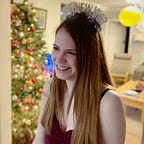An Expedition to Measure the Roundness of the Earth
The struggles and triumphs of a mission to Ecuador to determine the shape of the Earth
In 1735, a team of French and Spanish scientists set sail on a mission organised by the French Academy of Sciences to settle a debate between Isaac Newton and René Descartes, and discover whether the circumference of the Earth was greater around the equator or around the poles. Under the sponsorship of the French minister of the navy, who understood that knowledge of the shape of the Earth was essential for navigating the oceans, the group led by French astronomer Louis Godin began the journey to Quito, now the capital of Ecuador.
The team landed on the Caribbean coast and crossed Panama overland, before continuing to sail through the Pacific to Ecuador. Such a long journey was necessary, because discovering the shape of the Earth required the measurement of a degree of latitude at two widely separated points. These measurements had already been taken in Paris, and the French government was sending another expedition to Lapland, close to the Arctic Circle, around the same time. Taking measurements close to the pole and the equator would provide the most conclusive results about the shape of the Earth.
The method used to find the size of a degree of latitude was based on triangulation, where a distance and two known angles can be used to construct the rest of a triangle. A baseline distance and a chain of triangles is then used to find the distance between two points at almost the same longitude. The astronomers used star sightings at the most northern and southern points to find the latitude of each, and then divided by the length between them. This value could then be compared with the measurements from Paris. As a degree of latitude was found to be longer at the equator than in France, the results supported Newton’s belief that the Earth was an oblate spheroid, meaning the circumference was larger around the equator than at the poles.
The expedition took around 10 years, from when the group left France until the first member, Pierre Bouguer, returned home. The mission took such a long time for various reasons, including extreme weather, earthquakes, altitude sickness and difficulty with mountain transport, for which they were unprepared. Their equipment was stolen by local people and damaged along the way. The process of setting up and calibrating the instruments was a long one, and at one point the team was set back by two years due to a mistake in the method. The most significant problems appear to have been tension within the group and a lack of leadership, with Godin squandering a large portion of their funding on a diamond for one of his mistresses.
Despite all of these challenges, when Bouger eventually presented the results of the mission (alone) to the French Academy, they were astonishingly accurate, to within roughly 45 m over one degree of latitude (about 111 km). Combined with the measurements from Paris, the results meant that the Earth was wider at the equator by about 1/334 of its diameter. This is a consequence of the force that is exerted by the rotation of the planet. The results provided evidence for Newton’s theory that the shape of the Earth was the reason that the force of gravity was weaker at the equator (as objects on the surface here are further from the centre), and allowed maps to be made more accurate, paving the way for future expeditions.
The mission to Ecuador not only provided these incredible results, but also brought back a wealth of information about the South American continent. The team became the first Europeans to document rubber, they correctly identified the type of cinchona tree that produces an anti-malaria agent, and they witnessed two eruptions of the Cotopaxi volcano. They also wrote accounts of the exotic flora and fauna of South America. Charles Marie de La Condamine even developed the metre as a standard unit of length based on the size of the Earth. These are all examples of how travelling across the world for a particular experiment can yield fascinating and unexpected discoveries.
